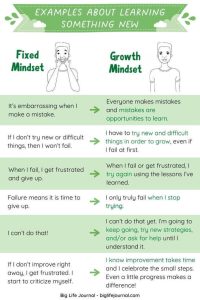Teenagers are typically known to go through periods of extreme emotional responses, risk taking behaviors, boundary pushing and lack of impulse control. Parents/guardians usually are concerned and confused when faced with the emotional ups and downs during the teen years. Changes in relationships, social situations, and desire to leave and stay close to parents, can be overwhelming for teens.
Many teens are stuck in a fixed mindset. They might believe they are not good at science or bad at sports. Helping teens incorporate a growth mindset can help them strengthen friendships, promote healthy risk taking, begin or strengthen athletic skills and improve grades.
Tips for teaching teens a growth mindset
1. Share facts about the brain: Talk about neuroplasticity. Reinforce that their brain has the ability to learn new skills and improve old habits throughout their lives.
2. Incorporate growth mindset into household vocabulary: Share ways you are learning and growing as an adult.
3. Goals are good: Focus on the process of goal setting rather than the goal itself. Use creative options such as vision boards.
4. Make space for failure: Failure is not the end. It is an opportunity to learn and to try something different.
5. When things don’t go as planned- Brainstorm together: Instead of telling teens what to do and how to fix problems, brainstorm together. Walk through what happened and explore problem solving options.
6. Watch your reactions: Encouraging your kids to adopt a flexible mindset might require parents to work on their own mindsets. How parents/guardians describe challenges, matters.
Danielle Kowach, LCSW